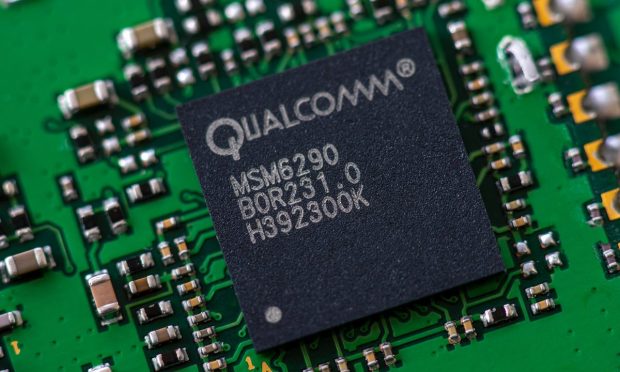Qualcomm: Wireless Technology Market Will Grow 7X Over Next 10 Years

The total addressable market for wireless technology will grow sevenfold in the next decade, driven by expanding applications in the Internet of Things (IoT), handsets, automotive and RF front-end categories, according to Qualcomm President and CEO Cristiano R. Amon.
“These trends, which include the enterprise transformation of the home, convergence of mobile and PC, merging of physical and digital spaces, the digital transformation of industries, connectivity and processing at the edge, the automotive digital chassis and 5G, have only continued to accelerate,” Amon said Wednesday (April 27) while sharing that prediction during Qualcomm’s quarterly earnings call.
Multiple Verticals are Pursuing Digital Transformation
During the quarter that ended March 27, Qualcomm’s IoT revenues grew 61% year over year, according to a presentation released in conjunction with the call. IoT saw growth across all three categories: consumer, edge networking and industrial.
“In consumer IoT, Android tablets are becoming collaboration tools and, increasingly, demand is shifting from entry-level commodity tablets to premium connected computing devices — a clear validation of the convergence of mobile and PC,” Amon said.
In edge networking, Qualcomm sees continued demand for the connectivity required for remote work, school and play, Amon said. Its 5G fixed wireless access designs are growing, too, as they are deployed as a last-mile broadband solution.
Industrial IoT was the category within IoT with the fastest year-over-year revenue growth, driven by demand for connectivity and advanced processing at the edge. Amon said this quarter saw accelerated demand for ruggedized handheld devices used in warehousing, logistics and healthcare and for robotics platforms.
“Going forward, we’re actively building an ecosystem of system integrators and channel partners to support the scale of our industrial IoT platforms as they become critical for the digital transformation of multiple verticals,” Amon said.
Cars are Becoming ‘Connected Computers on Wheels’
Handset revenues grew 56% year over year. In this category, Amon highlighted continued advancements in smartphone cameras, artificial intelligence (AI)-based performance enhancements in connectivity and computational performance.
Growth in handsets is being driven by the transition from 4G to 5G, and by the growing demand for increased performance in processing power, cameras, audio, video and security.
Automotive revenues grew 41% year over year. The company’s Snapdragon digital chassis offers automakers platforms for telematics, connectivity, digital cockpit, advanced driver assistance systems (ADAS), autonomy and cloud services.
Asked by an analyst if Qualcomm was on track to meet the automotive revenue growth it had projected during an earlier meeting, Amon said, “It’s looking really good. The way you should think about that is, as the cars are really becoming connected computers on wheels, the digital chassis assets of Qualcomm are really resonating with carmakers.”
Qualcomm Sees ‘One of the Biggest Opportunities in Our History’
RF front-end (RFFE) revenues grew 28% year over year, driven by 5G modem RF systems. RFFE comprises mobile device components that convert information into radio signals that can be transmitted and received over the air.
“Looking forward, in addition to growth in handsets, we’re expanding RF front-end into automotive and IoT,” Amon said.
At the close of the call, Amon said Qualcomm is changing from a communications company for the mobile industry into a connected processor company for the intelligent edge, highlighting the current size of its IoT, automotive and RF front-end businesses.
“We’re just busy executing on one of the biggest opportunities in our history,” Amon said.